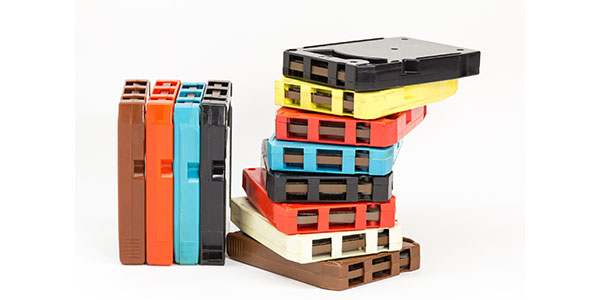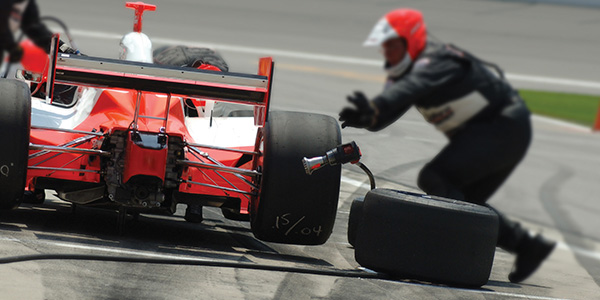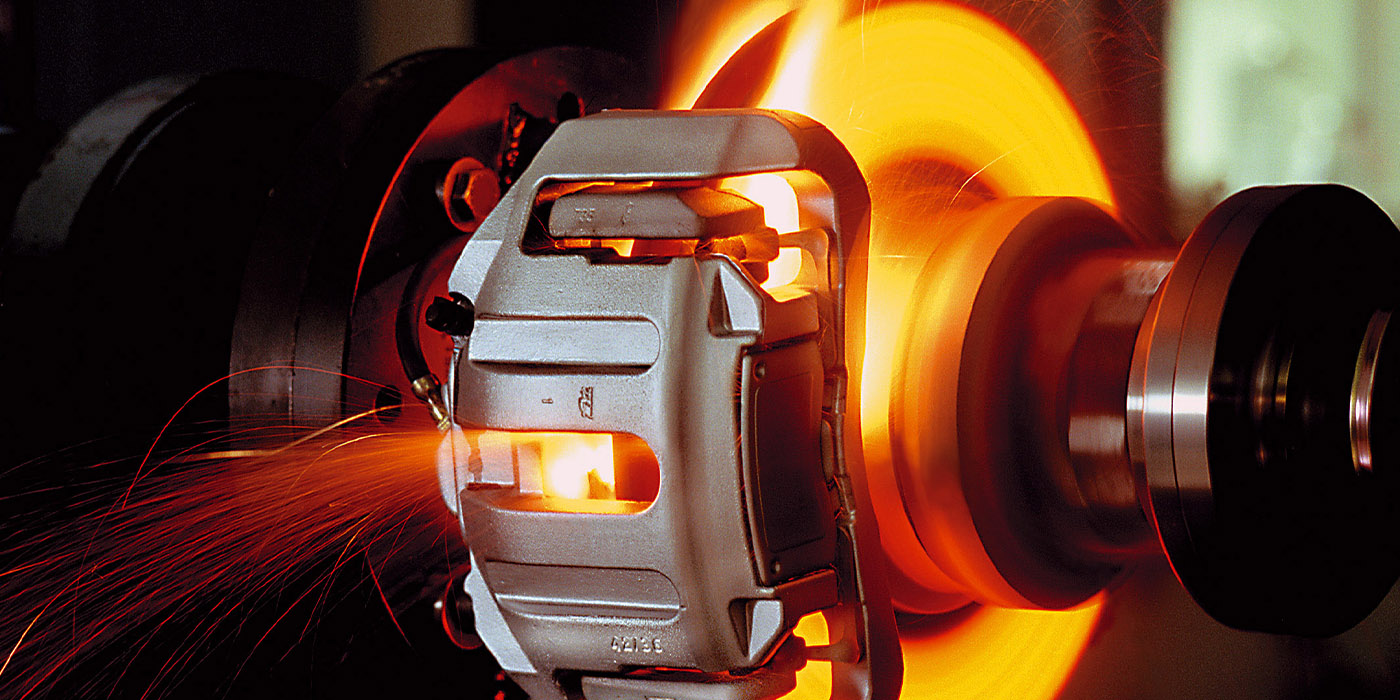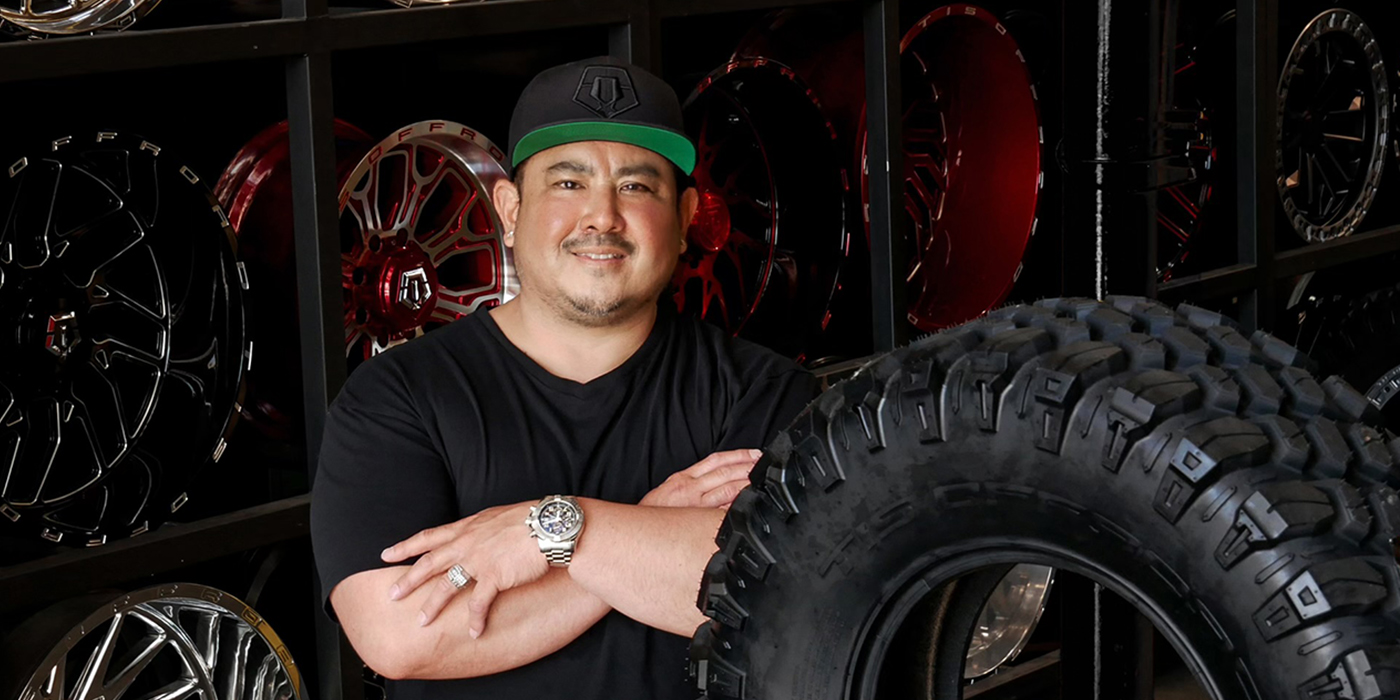
These days when you get into your car and you want to listen to music, you wirelessly connect your smartphone via Bluetooth to your car’s sound system and rock Spotify. But it wasn’t always like that, kids.
First, there was this thing called radio. You turned it on and hoped it would play something you wanted to hear. Most of the time, you just took what you got because the alternative was silence.
Then someone got the bright idea of giving people a way to play their music in their cars. Getting from there to here was a bumpy ride. Back in this benighted time, Chrysler actually came out with a car with a turntable built into it, one that popped down from under the dash and played 45s. If you think about the needle skipping along with every bump and swerve, you can see why that didn’t catch on. But the concept of having your music when you wanted it was a good one. It just needed better technology.
Bill Lear, who was an engineer at Motorola and the founder of LearJet, was a man of incredible invention. He never stopped having ideas. One of the things he put thought into was this notion of portable music. There was a fairly new product on the market called the 4-track, and he, initially, got involved with it. It was a really clunky mechanism that involved using tape instead of record players, which was, clearly, a step in the right direction. He went out looking for somebody who could help him build this new audio product.
He found my dad.

My dad had made a name for himself as a top-flight audio engineer and product developer in the audio and video world. So he brought my dad in, and together, they came up with the first, working, 8-track tape player.
It changed music for everybody. It changed it for audiences. It changed it for the industry, for rock bands, and for radio. It changed it for teens, who could now cue up their favorite make-out music. People were now free to carry their own music with them, not only in their cars but on portable players too.
During the time they were developing this product, Dad and Lear were trying to figure out where they were going to manufacture it. Most of the money Lear had raised was going into jets, so there wasn’t much left over to build 8-tracks. They were, originally, based in Detroit and tried to produce them there, but labor costs were too high. They tried to start up a facility near their offices in Tucson, Arizona. The labor was cheap, but local officials were expensive.
It was my dad who came up with the idea of building it to Japan. If you remember back that far, in the 1960s, “Made in Japan” had a very different connotation from what it has today. “Made in Japan” meant the product was junk. Japan was still in the midst of rebuilding after World War II, and the only quality products coming out of Japan at that time were those little colored umbrellas you stick in drinks. But labor costs were attractively rock-bottom, and my dad saw the opportunity there. All they’d have to do was to figure out a way to build quality into the product.
So they brought in an American who was already in Japan, consulting for a lot of companies. His name was W. Edwards Deming.

Deming had revolutionized Toyota, which bought big into Deming’s philosophy of total quality management, meaning, essentially, that quality is built in before the product gets made. In the past, there’d been this notion of quality control, in which products were tested as they rolled off the production line. If they didn’t work, they were rejected. Deming realized that was costing money, and he was very successful in creating a corporate culture built around doing it right.
As a young teenager, I was dragged on trips for some father-son time. Sometimes, we traveled with Lear and/or Deming. Both were brilliant guys. Lear was great to hang with; Deming not so much. He was a bit irascible, and not really fond of hanging out with kids.
I picked up, from listening to him, one thing in particular that kind of stuck in my head, and many years later, it popped up again: his concept of benchmarking, which is one of the cornerstones of total quality management. What Deming used to describe as the key idea of benchmarking was studying other companies. You studied other organizations. You examined what they were very, very good at, and you took that knowledge back to your company and emulated it within your own context.
Deming said there are two broad definitions of benchmarking: internal benchmarking, and external benchmarking, or intrinsic and extrinsic benchmarking. Essentially, internal benchmarking means you benchmark your own industry. You study what your competition is doing because you need to know where you stand relative to your competitors.
While, of course, you do have to be aware of what the competition is up to, Deming felt the problem with internal benchmarking is that you never get new ideas from your competition. You can only take their improvements and, maybe, make them a little better.
Industries follow this strategic orthodoxy in which companies look at each other, within their industry, and they all copy each other. And when they copy each other, what happens? Eventually, nobody’s different in any meaningful way. Competition breeds conformity, not innovation.
Deming said that was fine, as far as it went. His idea was that you use internal benchmarking for fuel, not for ideas. Yes, it would help keep you moving, but it couldn’t be the end-all.
His groundbreaking idea was extrinsic benchmarking, studying aliens: you study people and organizations and businesses that have no relationship to your world at all. It sounds crazy. Why in the world would you do that? Here’s an illustration.
One of my clients is CONEXPO, which is the largest tradeshow in the United States. It’s in the construction industry, and it’s enormous. I took the heads of CONEXPO to one of my Stealing Genius laboratories. On these special field trips, we explore other industries and look for ways to apply what they’re doing to what we do. As part of this particular laboratory of going out and studying aliens, I told my clients we were going to visit the American Girl store in Chicago. I actually waited until we were, literally, on the bus before springing that news on them because I knew what the response was going to be from the male participants. I really wish I’d taken pictures of their faces when I announced our destination.
“I’m taking you to a doll store.”
“We’re going to a what?” (Why are we paying you?)
By the time we left the American Girl store, their jaws were on the floor because the ideas the trip had sparked for them were so many and so broad.
I don’t know if you’re familiar with American Girl, but you need to be. This was the original American Girl store. At the time, they had about eight dolls in their line, and each one represented a fictionalized girl’s life at a different period in American history. For instance, my daughter’s doll was Felicity, whose backstory was built around the era of the American Revolution. The clothes, accessories, and storybook about her life that came with the doll—everything—was detailed and accurate in terms of the history represented.
At this particular store, they had, for each of these dolls, an actual museum-style case in which there were pictures and genuine artifacts from that doll’s historic era, with explanations of what they were and how they’d have been used.
And CONEXPO stole that ingenious idea.
I remember, when I walked in to their next trade show, they said, “Hey, Steve, come here and take a look at this.”
They’d actually created a mini-museum right there at the show, a historical museum of the history of construction. Just as the American Girl store had done, they had different “windows” looking into the different eras of construction, complete with artifacts and pictures. It was fantastic.
I said, “Oh, wow! You took that from the American Girl store!”
They were all laughing; “Yeah, that’s right, but just don’t tell any of the other guys here.”
Another example of Stealing Genius comes from back in the early days of Southwest Airlines’ life. Looking at costs versus profit, one of the things the CEO Herb Kelleher realized was the airline did not make money when airplanes were on the ground. It only made money when airplanes were flying because people pay to fly. It takes most airlines at least forty-five minutes to an hour to clean up and prep a plane for new passengers between flights. How could he cut the downtime the planes spent on the ground?

He found the answer from studying NASCAR pit crews. During a race, every second spent getting more gas, a change of tires, or fixing a problem costs precious time on the track. Pit crews spend hundreds of hours practicing to get their job done and the car out as fast as possible. Nowadays Southwest has its planes loaded and ready to roll in about twenty minutes. They average 10.5 daily flights per gate, compared to the industry average of 5.0.
How do they do it? Everyone pitches in—even the pilots—when it comes to cleaning and getting people on.
Ever see a NASCAR pit crew in action? It’s like a well-oiled machine: everyone is in motion, doing what needs to be done, without a wasted move. If your car is in the pit, you’re losing valuable distance on the track, so every millisecond counts. Herb Kelleher realized that kind of organized effort could solve his turnaround problem, so he hired a NASCAR pit crew to come in and teach his people how to make every second count. That’s one of the big reasons why Southwest Airlines is one of the top-grossing airlines around.
Peter Drucker, who’s generally acknowledged to be the godfather of modern corporate management, used to say there were only two things a corporation needed to do really, really well. One was marketing, and the other was innovation, and everything else played a support role to those two, including manufacturing, and production.
Remember, improvement is not innovation. Innovation is closer to game changing than it is to incremental upward movement. Instead of looking within the industry, study aliens. By aliens, I mean people and industry cultures that are foreign to you. It’s not unusual to see something that might be common in another industry but doesn’t exist in your industry. You have to take that common thing and bring it back into your industry, where it’s brand-new. And if you do it right, it’s hard to copy.
Stealing Genius is a powerful tool, but only when you pay attention. Always remember to have your radar up. Be alert for ideas. As you observe companies you admire and/or do business with, ask: What are they doing that’s different? How are they communicating with customers? How are they directing people? How are they marketing their products or services?
Then ask yourself, “Is this something I can steal?”













